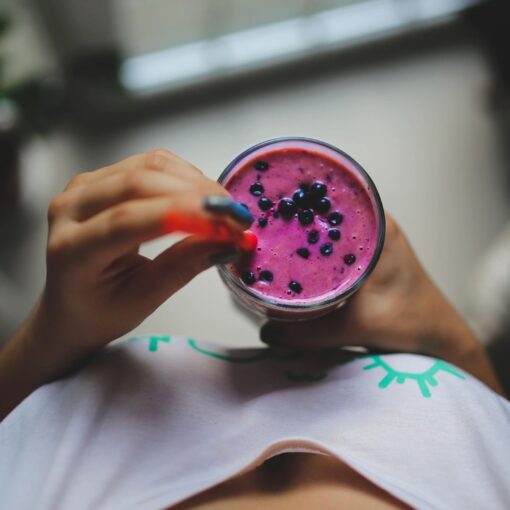The Office of National Statistics recently announced that The UK has returned to recession for the 3rd time in 8 years. The challenge in the UK manufacturing sector as a whole is further underlined by a dive in productivity when compared to other industrial nations with UK showing more than 30% lower GDP per hour than countries such as US, France and Germany. With such a proud manufacturing heritage this has got to be cause for concern and time to explore the need for Robotics in food and beverage manufacturing. And with the Steel industry currently suffering as a result of changing economic landscape, it is time for other industries – especially food and drink manufacturing – which contributes almost £100 billion p.a. to the UK economy and employs 3.3 million people, making it the largest manufacturing sector in the UK, to sit up and take note.
It does not bare thinking about that food and drink manufacture could suffer in the same way that the steel industry has.
It is often said though, that “history repeats itself, as no-one was listening the first time”
Why is this happening ?
There are many social, economic and politic reasons behind this, but the impact of technology, and specifically robotics cannot be ignored.
In 2014, global robot sales increased by 29% to 229,261 units, not surprisingly highest number in a single year to dates. Equally not surprising, the main growth has been seen in the automotive parts suppliers and electrical/electronics industry.
And this is where comparisons to the steel industry comes into focus. China has considerably expanded its leading position in adoption of robotics with a share of 25% of the total supply in 2014. Taking another look at the productivity data shows that countries that are leading the way in terms of productivity such as Germany, France and US show a strong correlation to the number of robotic installations, with the US and Germany featuring in the 5 countries accounting for 70% of all robot sales along with China, Japan and Korea. During this period, France have increased their investment in Robotics, whilst the UK’s commitment has been in decline. And whilst it might be said that Japan comparative productivity is lower than UK, this is quite apparently being tackled through manufacturing innovation and commitment to industry 4.0. The forecast for robotic installations sees China looking to around 150,000 in 2018, double the 2014 levels, compared to the UK whose forecast is fairly flat during the same period. The other industrial nations showing steady growth during the same period. However looking at the bigger regional picture, Europe and the Americas are only forecasting single digit growth in robotic installations, compared to steady double digit growth for the forthcoming years in Asia.
Robotics in food and beverage manufacturing
These are worrying patterns of behaviour that could threaten European food and drink manufacturing.
As indicated earlier it is no surprise that automotive leads the way in robotics, but it is an industry that continues to invest and innovate this sector account for more than 40% of all robots sold. The food and drink sector lags a long way behind, and is losing further ground, with around 10% of the number installed in automotive sector. It is not however because that sector is necessarily more suited, but it has been driven for them to become more efficient and productive and allowing them to compete on a global platform.
With the food and beverage sector at such low levels of commitment, and as such an important economic contributor, the use of Robotics in food and beverage manufacturing must become part of the vision for the future factory, and the move to Food Manufacturing 4.0.
There are some really positive examples of how robotics in food and beverage manufacturing could play a part. Amazon, the on line retailer, are well known for their disruptive approach to retail, and have improved their distribution efficiency through the introduction of the Kiva robot in the US, and it doesn’t stop there for them, with their development work looking at robotic ‘pickers’. It is worth noting this is about making human redundancy, but about improving efficiency and productivity. With the recent announcement of a Morrisons – Amazon agreement, it will not be long before the retail landscape is changed by the introduction of the Amazon model to food and drink.
Palletizing robots have started to become a familiar sight, but more needs to be done to bring robotics into the production space to enhance the productivity. It must be essential since with rising populations, the ability to produce sufficient safe food is being questioned. Peterborough based OAL group have recognized this with their development of the system they are calling APRIL, the robotic chef. http://www.bakeryandsnacks.com/Processing-Packaging/Meet-APRIL-the-robot-that-prepares-food-like-a-chef , but this is a technology push, there needs to be greater recognition of the significance of the situation and manufacturers and retailers alike shouting about their need to improve their productivity, recognizing that food manufacturing 4.0 is here, and that to be part of that journey, they need to invest appropriately and incorporate robotics within their manufacturing environment. Early signs are that maybe this message is starting to stick. Some robotic manufacturers are reporting as much as 35% increase in enquiries from Food and drink sector manufacturers – but this is from a low starting point, and does not necessarily indicate a wave of change.
25% improvement in food manufacturing productivity
A report by Barclay’s bank in 2105 recognized this and forecast that with investment of £1.2bn in automation will add £60bn to the UK economy and represent a £49 return for every £1 spent. Ultimately safeguarding 106,000 jobs. Barclays also note that the food and drink sector would be one of the primary sector to benefit, with productivity improvements of 25% being achieved by 2025. http://www.newsroom.barclays.co.uk/r/3273/investment_in_manufacturing_robotics_could_boost_british
With these facts and forecasts in mind it must be time for the food and drink manufacturing industry took at what’s happening in technology and innovation, look at the desperate state of other struggling sectors and start to listen to learn from history.
Peterborough based OAL (www.OALgroup.com) and the University of Lincoln (https://www.lincoln.ac.uk/home/holbeach/) have been a champion of Food Manufacturing 4.0 and are undertaking what might be considered a transformative if not disruptive development with the APRIL robotic chef. APRIL (www.APRILRobot.com ) is challenging the way food production lines are set out, moving away from ‘traditional’ linear continuous production, where high volume and limited flexibility have been the watch words. APRIL is set to deliver a system that introduces a return to flexible batch systems, but with intelligent and integrated scheduling that optimizes production, improves efficiency and in doing so enhances productivity – Maybe more traditional than linear continuous systems in reality?




